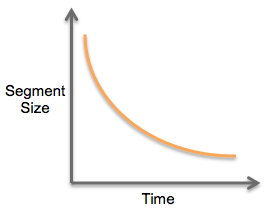
Get your FREE 30-day trial.
Please complete all fields.
 Not really. But do I have your attention now? In the our current zombie apocalypse-obsessed culture, it has become cool to announce things as "dead." You've read the headlines: Direct Marketing is Dead! Email is Dead! Facebook is Dead! Our very own @jkrohrs has an entire keynote dedicated to the channels that have been announced dead. Good news for you Marketing Segmentation, you're in good company.
Not really. But do I have your attention now? In the our current zombie apocalypse-obsessed culture, it has become cool to announce things as "dead." You've read the headlines: Direct Marketing is Dead! Email is Dead! Facebook is Dead! Our very own @jkrohrs has an entire keynote dedicated to the channels that have been announced dead. Good news for you Marketing Segmentation, you're in good company.
Here's the thing, though-none of these marketing strategies are dead. As Mark Twain so eloquently stated, "Reports of my death have been greatly exaggerated." Rather, they're changing. Marketing Segmentation is going nowhere, but it is changing. Not dying, just agingâ¦like a fine wine.
Market segmentation has long been defined as grouping your market into subgroups of individuals with the same characteristics. For instance, you could segment your market by gender, location, favorite product, past purchases, and the list goes on. That was the old way. In today's data-driven world, there's a new way.
The size of your marketing segments should be one. Yeah, one. While this may not be possible in all channels, your digital communications should not be blast messages to "segments" of people, they should be 1:1 communications with individuals. The array of data available is too good to not take advantage of. Even if your customers, prospects, or subscribers haven't blatantly told you information that makes this communication possible, the data is available to create much smaller segments and potentially, segments of one. As time passes, data is collected and your segments should get smaller. Let's look at three examples:
 The "Handcrafted just for you" campaign was one of the most talked about emails of all time. As a
The "Handcrafted just for you" campaign was one of the most talked about emails of all time. As a Market Segmentation isn't dead, it's simply changing. The entire digital world is changing. It's a world populated with data and in my opinion, that's a fun world to live in. Good marketers will use the tools available to analyze that data and create segments of one. Marketing Segmentation is alive and well. When done well, it's better than ever.